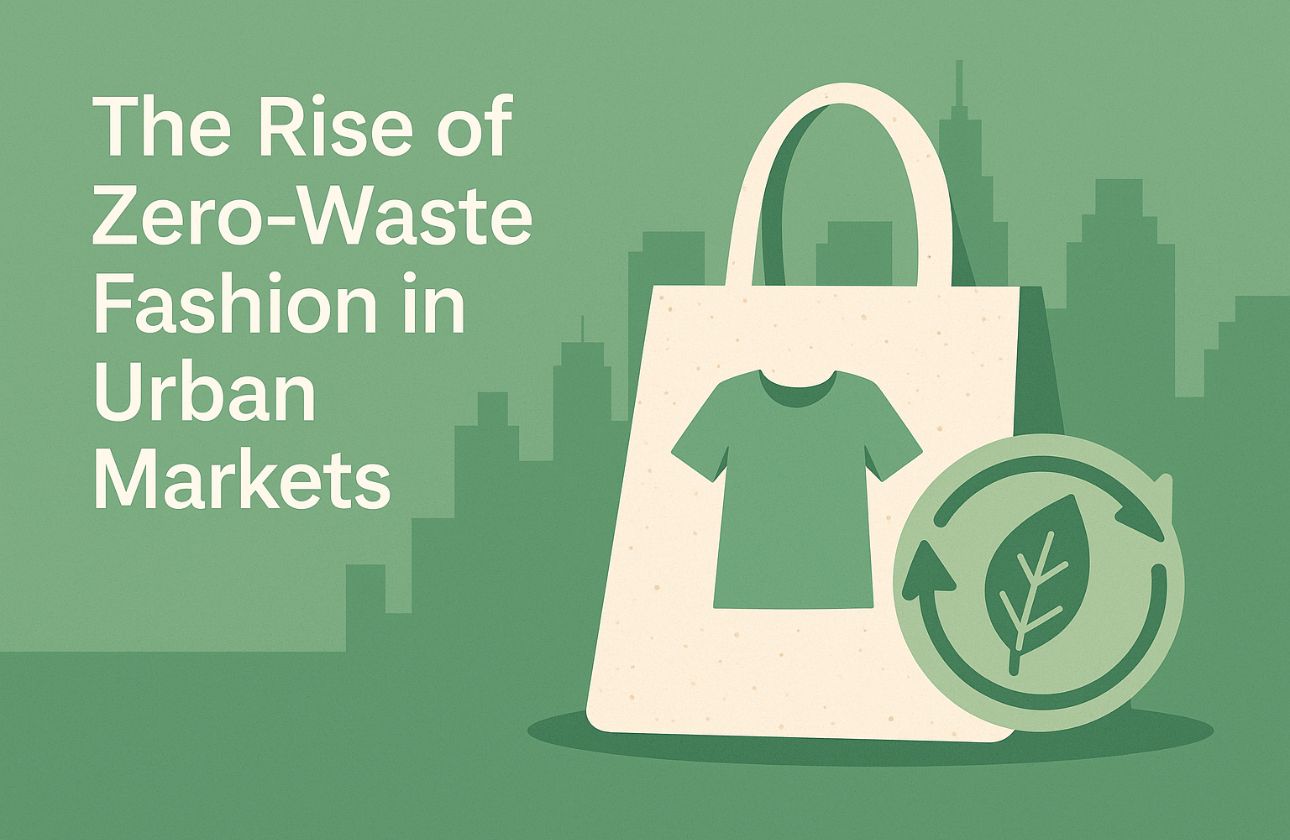A Shift Toward Sustainable Style
The fashion industry is experiencing a green revolution, especially in urban landscapes where awareness, innovation, and consumer power are converging. Zero-waste fashion is emerging as a bold and responsible alternative to traditional fast fashion, and it's gaining rapid popularity in metropolitan markets.
What is Zero-Waste Fashion?
Zero-waste fashion refers to the design and production process that aims to eliminate textile waste. Instead of discarding leftover materials, designers create patterns that use the entire fabric roll efficiently. This approach reduces landfill waste, conserves resources, and encourages thoughtful garment construction.
In short, it's a design philosophy rooted in sustainability and circular economy principles.
Why Urban Markets Are Embracing It
City dwellers are often the first to adopt eco-conscious lifestyles. With better access to sustainable brands, educational content, and community-driven initiatives, urban consumers are actively shifting their preferences toward more responsible fashion choices.
Several factors contribute to this trend:
-
Increased awareness of fashion’s environmental impact
-
Demand for transparency in production
-
Desire for individuality and timeless style over mass trends
Urban consumers are not just buying clothes—they are making ethical statements with every purchase.
Leading Designers and Brands in Zero-Waste Fashion
Several brands and designers have embraced the zero-waste model and are making waves in the fashion capitals:
-
Tonlé (Cambodia/USA): Uses scrap fabrics from garment factories to create elegant, minimal clothing.
-
Zero Waste Daniel (USA): Creates bold, patchwork-style streetwear entirely from textile waste.
-
The R Collective (Hong Kong): Focuses on upcycled fashion, using surplus luxury fabrics.
These brands are redefining the urban style narrative by fusing sustainability with high-end design.
Role of Technology in Sustainable Fashion
Urban markets, being tech-forward, benefit from tools that support zero-waste fashion:
-
3D Pattern Design: Helps visualize garments with zero fabric waste.
-
Laser Cutting Technology: Reduces material errors and optimizes use.
-
AI-Powered Trend Forecasting: Prevents overproduction by predicting demand accurately.
-
Virtual Fitting Rooms: Minimizes physical sampling and returns.
These tools not only enhance precision and efficiency, but also lower production waste and operational costs.
Educated Consumers Driving the Movement
Urban consumers today are:
-
Reading fashion impact reports
-
Following sustainable influencers
-
Attending eco-fashion popups and workshops
-
Demanding certifications like GOTS, OEKO-TEX, and Fair Trade
This generation of buyers isn’t satisfied with just aesthetics—they demand accountability, ethics, and eco-values from their wardrobe choices.
The Challenges of Scaling Zero-Waste Fashion
Despite its promise, zero-waste fashion faces some challenges:
-
Higher production costs due to slow processes and ethical labor
-
Limited mainstream visibility outside niche or premium markets
-
Supply chain limitations in sourcing sustainable fabrics at scale
However, with innovation, policy support, and consumer demand growing, these barriers are slowly being overcome.
The Future of Fashion in Urban Markets
Zero-waste fashion is not a passing trend—it’s a long-term evolution of the clothing industry. Cities are becoming the hubs of conscious consumption, driving forward:
-
Rental and resale platforms
-
Repair and upcycling communities
-
Support for local, sustainable labels
-
Policy frameworks encouraging ethical production
The fashion of the future in urban markets is circular, inclusive, and sustainable—centered on purpose, not just profit.
Fashion With a Conscience
The rise of zero-waste fashion in urban markets signals a bold step toward a more sustainable future. With every stitch and seam, the movement is proving that style and sustainability can coexist beautifully. As more consumers, designers, and businesses embrace this philosophy, fashion becomes not just about what we wear—but how we impact the world.




Comments (0)